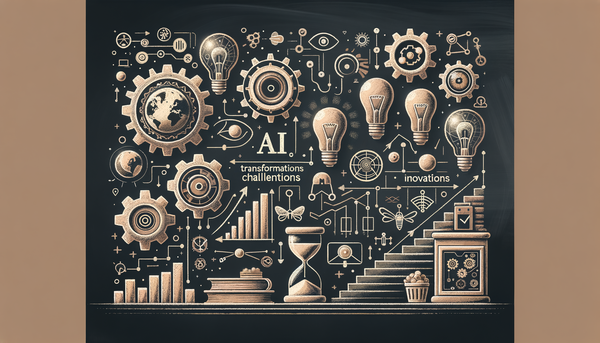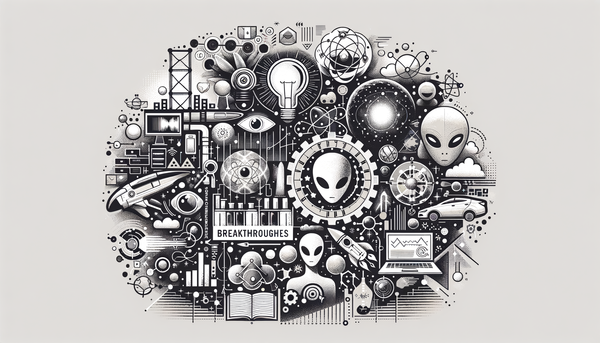AI Education Investment and Innovations
In a world where a single misstep in vulnerability management can cost millions and where the very heartbeat of emergency care hinges on AI's split-second precision, today's innovations are not just risks mitigated—they're paradigms transformed.
Transforming Cybersecurity: A New Era of AI-Driven Defense
The advent of AI in cybersecurity is reshaping an industry that was once dominated by outdated scanners and disparate hardware solutions. CrowdStrike’s latest enhancement to its Falcon Exposure Management platform stands as a testament to this evolution. By harnessing its ExPRT.AI technology, the platform now reduces network vulnerability costs by a staggering 98%. This is not mere incremental progress—it's a wholesale reinvention of vulnerability management.
Traditional vulnerability scanners churn out endless reports of static flaws, overwhelming security teams who struggle to decipher the severity of each risk. Instead, CrowdStrike's approach prioritizes the most critical vulnerabilities—the proverbial 5% that account for 95% of overall risk exposure. With integrated threat intelligence and behavioral analysis, organizations can now understand the nuanced tactics adversaries might deploy in real time, empowering security teams to take decisive actions.
Added to the innovation is the fact that organizations can assess up to 10% of their network assets for free during initial trials. This "try before you buy" initiative lowers the barrier for adoption, encouraging companies to transition from legacy tools to a unified, agile threat remediation solution. Automated remediation via Falcon Fusion SOAR further amplifies this efficiency, transforming vulnerability reports into immediate action plans.
In a similar vein, Dropzone AI has emerged as a critical player. After reporting an incredible 10X Q4 ARR growth, Dropzone AI has redefined what it means to meld AI with security operations. Their introduction of the AI Interviewer—a tool that automates user interviews via platforms like Slack—epitomizes the drive toward practical automation in cybersecurity workflows. Integrating with established systems such as CrowdStrike’s Falcon platform, Dropzone AI not only speeds up threat investigations but also facilitates intelligence-driven decision making. This fusion of automation and analysis embodies the very spirit of cybersecurity innovation today.
As one expert famously noted,
"In the escalating battle against cyber-attacks, precision and speed are not just advantages—they're necessities."
Such sentiments echo throughout the cybersecurity community, urging a continuous reevaluation of how we safeguard our digital future.
For those interested in further exploring these dynamic transformations, recent discussions on AI integration trends and game-changing AI solutions provide additional context on how revolutionary technologies are permeating and shaping the very fabric of our industries.
Navigating Financial Waters: AI in Investment Strategies
Amid the chaos of volatile markets and the unpredictability of tech stocks, machine learning stands as a beacon for strategic investment. Daniel Mahr, through his leadership at Federated Hermes, leverages an AI model that combines decision tree analysis with a deep understanding of investment factors. This model doesn’t simply regurgitate historical trends; instead, it tailors its predictions to current economic climates and ever-shifting market dynamics.
In a marketplace where giants like Nvidia and the so-called "Magnificent Seven" are often seen as safe bets, Mahr steers clear of the herd. He cautions investors against overexposure to seemingly lucrative tech titans whose valuations might be inflated. In turn, his model has opened up more promising opportunities with firms like Qualcomm and Fortinet. This refined approach, once regarded as counterintuitive, is now establishing new benchmarks for AI-driven portfolio management.
The efficacy of Mahr’s machine-learning framework is evident from the striking annual return of 26% achieved over five years. Yet, alongside impressive returns comes a necessary acknowledgment of limitations. AI, for all its impressive analytical prowess, can sometimes be constrained by historical bias or the unpredictability of future events—an important caution for even the most seasoned investors.
Reflecting on this dynamic, it is worth remembering the words of Jack Ma:
"Artificial intelligence is not just about automating processes, it’s about transforming industries and making people’s lives better by solving complex problems."
Such thoughtful insight challenges both investors and technologists to balance innovation with responsibility.
Bridging the Gap: AI's Confluence in Education and Corporate Strategy
The transformative potential of AI is not confined solely to technological efficiency; it extends deeply into education and public policy. The recent donation by Netflix Co-Founder Reed Hastings serves as a poignant reminder. By contributing $50 million to Bowdoin College, Hastings aims to empower the next generation of leaders capable of navigating the complex world of AI. This initiative underscores a dual recognition: while AI paves the way for unprecedented advancements, it also demands an ethical framework and scholarly rigour to harness its true potential.
Bowdoin College, through this initiative, is poised to become a hub where discussions on AI intersect with liberal arts and ethics. The planned integration of new faculty and educational programs will foster an environment ripe for innovation and debate. Such educational advancements complement the business world, where changes are being unveiled every day at conferences like HumanX.
Held at the resplendent Fontainebleau Resort in Las Vegas, the inaugural HumanX AI conference was a melting pot of ideas where over 300 experts converged, spanning domains such as healthcare, finance, retail, and cybersecurity. Esteemed speakers, including HumanX CEO Stefan Weitz, emphasized the collaborative spirit essential for driving AI innovation. Moreover, the NYSE actively participated in these discussions, reinforcing the notion that AI’s impact transcends technological breakthroughs—it reshapes the very structure of business and governance.
Such events serve as a nexus for intellectual exchange, much like the comprehensive coverage available on topics of AI integration and business transformation at AI in digital advertising and educational initiatives and drug development innovations on AI.Biz.
Revolutionizing Healthcare: AI at the Intersection of Innovation and Urgency
Few sectors feel the pressing impact of technological delays as acutely as healthcare. With heart attacks striking every 40 seconds in the U.S., the timely and accurate diagnosis of conditions like ST-elevation myocardial infarction (STEMI) is paramount. Powerful Medical’s PMcardio STEMI AI ECG model has emerged as a groundbreaking tool, celebrated with the FDA’s Breakthrough Device Designation.
Traditional ECGs, though vital, can be slow and sometimes imprecise in emergency scenarios where seconds count. The PMcardio model leverages advanced AI to not only detect STEMI but also its subtler equivalents. In doing so, it offers healthcare professionals a critical edge in rapidly delivering life-saving interventions, especially in underserved rural areas where care is most delayed.
Commenting on the transformative potential of such diagnostic technology, Dr. Robert Herman emphasized the life-saving possibilities that AI integration brings to modern medicine. The application of continuous, efficient, and accurate detection methods marks a significant shift in emergency care protocols. This rapid evolution in medical diagnostics is being closely watched by both clinicians and regulators, shaping a future where AI-driven tools could become the norm in clinical practice.
However, the healthcare domain also underscores a recurring challenge: trust in AI. While AI models promise heightened efficiency, especially in critical applications, ensuring their reliability and transparency is key. Mayo Clinic, for instance, is meticulously synthesizing vast datasets to train AI, striving to bridge the inherent trust gap between machine precision and human judgement. It is a delicate dance—a balance between embracing innovative technology and safeguarding patient welfare.
The Human Touch in a Digitized Age: AI Agents and Their Challenges
As organizations across different sectors incorporate AI agents into customer service and operational workflows, truth remains that adaptation is often met with cautious scrutiny. At Nvidia's recent GTC Conference, prominent figures from companies like Yum Brands and U.S. Bank highlighted both successes and shortcomings in deploying AI agents. While the promise of reducing cognitive load and enhancing efficiency is alluring, the human element remains indispensable.
Many consumers continue to prefer speaking with human representatives, a sentiment deeply rooted in trust and personalized engagement. Yum Brands, which famously operates Taco Bell and KFC, faces this very challenge. Their aspiration to achieve fully digital ordering in the next five years hinges not only on technological advancements but also on overcoming customer skepticism. Here, AI agents are designed to handle mundane tasks—be it upselling or processing donations—but they are meant to complement, not replace, a human touch.
This trust challenge is further amplified in healthcare settings, where both patients and healthcare professionals must have unwavering confidence in AI diagnostics. Such challenges remind us that a "human-in-the-loop" approach remains critical, serving to reassure users that technological aid is both efficient and ethically sound.
Even as organizations streamline their workflows, early adopter evaluations indicate mixed results. For example, while scripted AI agents can reduce operational drag in back-office tasks, their inconsistent performance reminds us that innovation is rarely without its growing pains. As enhancing customer satisfaction remains a top priority, companies are walking a tightrope between leveraging efficiency and maintaining the empathy that only human interaction can provide.
Balancing Ambition with Prudence: Perspectives on AI's Future
When we examine the broad spectrum of AI’s impact—from cybersecurity and finance to healthcare and customer service—a recurring theme emerges: the fusion of sheer innovation with a measured dose of human oversight. AI’s potential is boundless, but without ethical frameworks and transparent methodologies, its promise may be undermined by unforeseen challenges.
It is here that thoughtful voices from the industry remind us to take a balanced approach. Consider the sage advice from Warren Buffett, who once opined,
"Artificial intelligence offers tremendous potential, but we must ensure it’s developed with a sense of responsibility to avoid misuse."
Such reflections underscore that while AI is a formidable engine of progress, its trajectory must be carefully navigated to avoid pitfalls.
Recognizing this complexity, industry pioneers are championing adaptive strategies that integrate historical insights with forward-looking models. As AI continues to evolve and prove its mettle across different domains, one can envision a future where ethical education, rigorous validation, and the ever-important human intuition converge to form a robust foundation for technological advancements.
The array of innovations—from CrowdStrike’s vulnerability assessment to Powerful Medical’s AI-driven diagnostic breakthrough, and from Reed Hastings’ educational investments to the transformative insights emerging from AI conferences—are reflections of a world in flux. A world where technology is reshaping industries, where operational efficiency meets ethical inquiry, and where each breakthrough invites a renewed commitment to balancing ambition with sound judgment.
Opportunities Ahead: A Cross-Industry Synthesis of AI’s Evolution
Looking at the landscape in its entirety, the cross-pollination of AI innovations from various sectors presents an exciting prospect for businesses and society as a whole. In cybersecurity, AI’s capacity to detect and remediate vulnerabilities in real time not only enhances security posture but also liberates valuable resources. In finance, where swift data-driven decisions can translate into substantial market returns, the adoption of AI models further accentuates the merit of adaptive strategies.
The impact on education and workforce development, buoyed by investments like Reed Hastings’ $50 million donation, signals a proactive convergence of academia and industry—an integration necessary for sustained innovation. At conferences like HumanX, leaders from finance, healthcare, and technology exchange ideas that ultimately feed back into more efficient, ethical, and transformative AI applications. This interconnected ecosystem reinforces that the future of technology is best envisioned when multiple disciplines speak a common language.
Furthermore, as AI systems mature, the synergy between automated analytics and human oversight remains critical. The evolving landscape requires thoughtful calibration between speeding up operations and ensuring that decisions are made with both precision and empathy. As organizations continue to advance, the imperative remains to harness AI's capabilities in ways that bolster both efficiency and ethical responsibility.
Readers keen on exploring these transformative trends can dive deeper into related topics on AI.Biz—whether it’s the latest on integration trends (exploring the mechanisms behind industry-wide AI integration), or understanding how AI is redefining digital advertising (navigating the new age of marketing with AI innovations).
Ultimately, our journey through these diverse applications of AI paints a picture of a future rich with opportunity, yet responsibly underpinned by a deep awareness of the challenges. As we stand at this intersection of progress and prudence, every breakthrough and every cautionary tale serves as a guiding light towards a balanced, secure, and truly transformative age.




